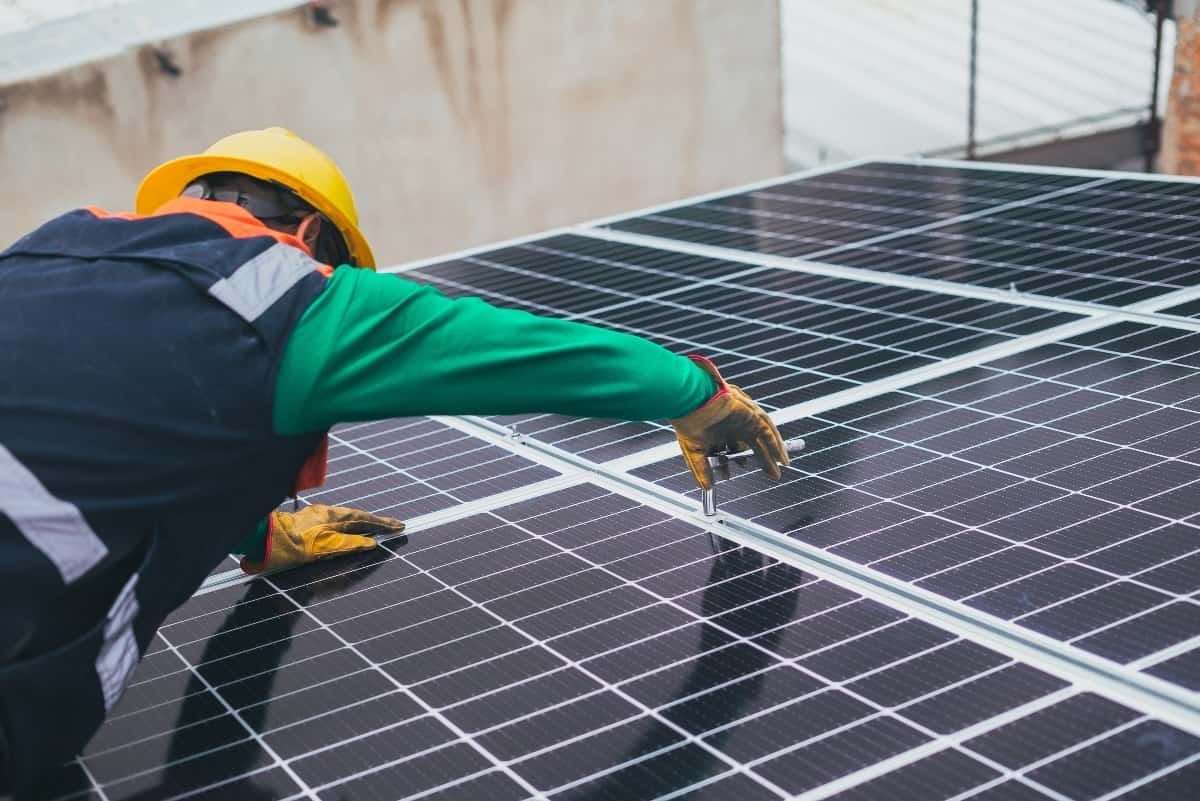More homeowners are considering the advantages of solar power as an alternative energy source. As the trend becomes more popular across the U.S., a federal law offers a solar panel tax credit as an incentive to embrace the new energy source in 2022.
The federal Investment Tax Credit, also known as the federal solar tax credit, continues at 26% through 2022. The tax credit gives property owners a dollar-for-dollar reduction in the amount of income tax owed by the property owner. For example, a $1,000 federal tax credit reduces a federal tax bill by $1,000.
The federal residential solar panel tax credit allows a taxpayer to deduct a percentage of the cost of a solar power system from their income taxes. If you’ve been thinking about installing solar panels at your home, 2022 is the last year that homeowners can receive the 26% credit. That is, unless Congress extends the credit again.
The tax credit drops to 22% in 2023 before it is set to expire the following year. The solar energy system must be placed in service and working in a home in 2022 to receive the 26% credit. There is no maximum credit amount that can be claimed. Although, the percentage of expenses that the credit applies to is capped in the years that apply. The IRS does not clearly define what “placed in service” means when referring to eligibility for the credit. However, the federal tax agency advises that it is similar to completed installation.
Discover Energy Audits with Solar Energy and ONIT Home
Try our Free Energy Audit to make sure your home is performing at optimum energy efficiency. We’ll inspect every nook and cranny of your home to make sure it’s best serving your needs. We’ll also give you tips on lowering your energy bills, conserving energy, and creating a more efficient space. To learn more about how we can help you maintain a top performing home, visit us online to get started!
History of Solar Tax Credit
The federal tax credit provides an incentive to homeowners. This incentive is in place to reduce overall dependence on traditional energy sources that rely on fossil fuels. Burning coal, oil and natural gas for electricity and heat makes up about three-fourths of the nation’s greenhouse gas emissions, according to the website CNET. These pollutants significantly contribute to rising global temperatures and sea levels, changes in weather patterns and other factors associated with climate change.
The solar panel tax credit is part of a larger effort to promote renewable energy alternatives, such as geothermal energy, wind power and solar power. This is used as a way to reduce the footprint caused by the continued reliance on fossil fuels. Various federal incentives exist in the U.S. for commercial and residential use of renewable energy. This includes the federal solar panel tax credit.
Advocates for the 26% tax credit believe the federal government will extend the incentive beyond its current deadline of the end of 2022 under President Joe Biden. Their optimism comes in the wake of the president’s actions prioritizing environmental issues. This is including his announcement on his first day in office that the U.S. will rejoin the Paris Climate Agreement. Additionally, including his move to do so a year later.
Who is Eligible for the Solar Tax Credit?
While the size of the tax credit in the Energy Policy Act of 2005 has changed over time, the law’s details about who qualifies have remained the same. You could receive the tax credit if you meet the following criteria:
- You installed a solar PV system between January 1, 2006, and December 31, 2023.
- The solar PV system serves your primary or secondary residence in the United States.
- An off-site community solar project serves your primary or secondary residence. Also, the electricity generated counts against, and does not exceed, your home’s electricity consumption. The IRS allows taxpayers to claim a tax credit for the purchase of a portion of a community solar project.
- You own the solar PV system that you bought with cash or with financing (i.e., you neither lease nor purchase electricity from a system you do not own).
- The solar PV system is new or used for the first time. The credit applies only on the original installation of the solar equipment.
What Expenses Does the Solar Tax Credit Apply To?
Under the federal law, you can apply certain costs toward the total amount that qualifies for the solar panel tax credit. You can count the following expenses toward calculation of your credit:
- Solar PV panels or PV cells that provide power to an attic fan.
- Contractor labor costs for onsite preparation, assembly, or original installation, including permitting fees, inspection costs, and developer fees.
- Solar system equipment, including wiring, inverters, and mounting equipment.
- Energy storage devices that your solar PV panels charge. This applies even if you install the storage devices in a subsequent tax year after you install the solar energy system. However, the installation date requirements governing the tax credit still apply to energy storage devices.
- Sales taxes on eligible expenses.
For example, if you pay $14,000 for a solar panel system in 2022, your eligible tax credit amounts to $3,640 on your income taxes that year.

Make the Most of the Federal Solar Tax Credit
Other incentives encourage solar power, including rebates, state-sponsored programs and other tax credits. The type and amount of benefits depends on where you live. While some of these financial incentives impact the federal tax credit, others help reduce the cost of installing a solar power system in your home. Here are some things to consider when combining solar incentives with the federal solar panel tax credit:
- Generally speaking, subsidies from your utility company must be excluded from calculating your tax benefit. So, with this incentive, any utility rebate for installing solar would be subtracted from the total cost of your system before you can calculate the federal tax credit.
- State rebates typically do not affect your federal tax credit.
- State tax credits for your solar system will not decrease your federal tax credits. However, remember that state tax credits reduce your state income tax. This means a higher federal tax bill because you will have less state income tax to apply as a deduction.
- Any time you receive money from selling renewable energy certificates, the revenue counts as taxable income that increases your gross income on your tax return. But it will not reduce your tax credit.
Key Facts to Know About Using the Solar Tax Credit
There are some basic points that accountants and tax advisors note that homeowners should consider about the federal solar tax credit. The tax credit can help with expenses for solar systems. However, it is important to understand certain things before making that commitment.
Homeowners Who Qualify Can Save on the Cost of Their System
In general, homeowners qualify for the federal tax credit as long as they have tax liability in the year they install and use the solar system in the home. The federal solar tax credit reduces the net cost of the solar system by up to 26%, the current amount of the federal credit. Think of it this way: for every $10,000 that you spend on installing solar power, you receive a credit for up to $2,600 on your federal income taxes.
The Federal Solar Tax Credit Allows Homeowners to Roll Over the Incentive
If a homeowner cannot use the full 26% tax credit in the year they install and turn on the system, they can roll over the leftover amount into future tax years. For example, if the 26% federal tax credit offers you $6,000 in reduced income taxes owed, and you have only $4,000 of tax liability in the year you place the system into service, you can carry over the remaining $2,000 to the following tax year.
Solar Power System Must be Installed Before Tax Credit Expires
The 26% credit will fall to 22% in 2023, and sunsets thereafter for homeowners, unless Congress extends the credit again. Remember, it takes weeks or months to approve installation of solar projects. You must also consider the actual time needed to install. So, those waiting to sign up for solar in late 2023 may miss out on the opportunity to claim any federal credit if it is not extended.
Watch For Additional Incentives
Keep in mind that states, local municipalities and utility companies offer additional incentives to homeowners who install solar panels. Make sure you do your research on what is available.
Look Towards ONIT Home For Quick Installation of Solar Panels
Homeowners should contact ONIT Home to find out how to save money with solar panels, both at installation and with the long-term reduced energy costs that solar provides. ONIT offers homeowners products and technology they want to keep electricity bills from rising and to reduce the amount of energy consumed.
To find out more, visit us online or give us a call today at 1-833-433-0331! Our team of representatives are on standby to help you discover why going solar is the top choice for homeowners.




